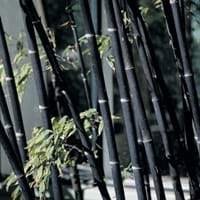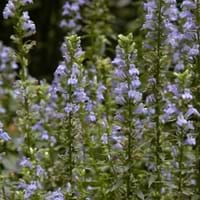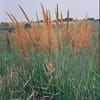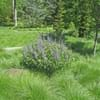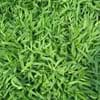Life Span
Annual and Perennial
Perennial
Origin
China
Northeastern United States, Mid-Atlantic United States, Southeastern United States, Central United States, Texas, Canada
Types
Timor Black Bamboo, Javanese Black Bamboo, Black Asper Bamboo
Not available
Number of Varieties
Not Available
Habitat
Not marine, Terrícola
Open areas, stream banks, Wet Woods
USDA Hardiness Zone
6-10
4-8
Sunset Zone
H1, H2, 5, 6, 7, 8, 9, 14, 15, 16, 17, 18, 19, 20, 21, 22, 23, 24
1a, 1b, 2a, 2b, 3a, 3b, 4, 5, 6, 7, 8, 9, 14, 15, 16, 17
Habit
Thicket/Colonizing
Clump-Forming
Flower Color
Not Available
Blue, Lavender, Blue Violet
Flower Color Modifier
Bicolor
Bicolor
Fruit Color
Not Available
Not Available
Leaf Color in Spring
Lime Green
Green, Dark Green
Leaf Color in Summer
Light Green
Green, Dark Green
Leaf Color in Fall
Lime Green, Dark Green
Green, Dark Green
Leaf Color in Winter
Gray Green, Dark Green
Light Green
Leaf Shape
Long Linear
Lanceolate
Plant Season
Spring, Summer, Fall, Winter
Summer, Fall
Sunlight
Full Sun, Partial Sun, Partial shade
Full Sun, Partial Sun, Partial shade
Growth Rate
Very Fast
Medium
Type of Soil
Clay, Loam, Sand
Clay, Loam
The pH of Soil
Acidic, Neutral, Alkaline
Acidic, Neutral, Alkaline
Soil Drainage
Average
Average
Bloom Time
Not Available
Summer, Late Summer, Early Fall
Tolerances
Not Available
Deer resistant, Shade areas, Wet Site
Where to Plant?
Container, Ground
Ground
How to Plant?
Grafting, Seedlings, Stem Planting
Divison, Seedlings
Plant Maintenance
Medium
Low
Watering Requirements
Average Water Needs, Water Deeply, Water occasionally
Do not let dry out between waterings, Needs Very high moisture, Requires consistently moist soil
In Summer
Lots of watering
Lots of watering
In Spring
Moderate
Moderate
In Winter
Average Water
Average Water
Soil pH
Acidic, Neutral, Alkaline
Acidic, Neutral, Alkaline
Soil Type
Clay, Loam, Sand
Clay, Loam
Soil Drainage Capacity
Average
Average
Sun Exposure
Full Sun, Partial Sun, Partial shade
Full Sun, Partial Sun, Partial shade
Pruning
Cut or pinch the stems, Pinch Tips, Remove damaged leaves, Remove dead branches, Remove dead leaves, Remove dead or diseased plant parts, Remove deadheads
Remove damaged leaves, Remove dead branches, Remove dead flowers, Remove dead leaves, Remove deadheads
Fertilizers
Nitrogen, Phosphorous
10-10-10, Balanced liquid fertilizer
Pests and Diseases
Red blotch
Head smut, Rust, Slugs, Snails
Plant Tolerance
Drought
Deer resistant, Shade areas, Wet Site
Flower Petal Number
Single
Single
Foliage Texture
Fine
Medium
Foliage Sheen
Matte
Matte
Attracts
Mites
Bees, Birds, Butterflies, Hummingbirds
Allergy
Dermatitis, Rash
Skin irritation, Skin rash, Toxic if not prepared properly
Aesthetic Uses
Showy Purposes
Beautification, Cottage Garden, Showy Purposes
Beauty Benefits
Not Available
Skin Problems
Edible Uses
Insignificant
No
Environmental Uses
Air purification
Air purification
Medicinal Uses
Antiemetic, Antitussive, Astringent, Depurative, Diuretic, Expectorant, Febrifuge, Sedative, Styptic
Diarrhea, Dysentry, Healing, Stomach pain, Syphilis
Part of Plant Used
Stem
Bark, Flowers, Leaves, Root
Other Uses
Basketary, Showy Purposes, Used for woodware, Used in Furniture
Used as Ornamental plant, Used for its medicinal properties
Used As Indoor Plant
Yes
No
Used As Outdoor Plant
Yes
Yes
Garden Design
Container, Feature Plant, Screening / Wind Break, Tropical
Mixed Border, Wildflower
Botanical Name
PHYLLOSTACHYS nigra
LOBELIA siphilitica
Common Name
Black Bamboo, Running Bamboo
Great blue lobelia, great lobelia
In Hindi
काला बांस
महान ब्लू लोबेलिआ
In German
schwarzer Bambus
Great Blue Lobelia
In French
bambou noir
Great Lobelia bleu
In Spanish
negro de bambú
Gran Lobelia azul
In Greek
μαύρο μπαμπού
Μεγάλη Μπλε Lobelia
In Portuguese
Black Bamboo
Grande Lobelia azul
In Polish
Czarny Bambus
Great Blue Lobelia
In Latin
niger Bamboo
Blue Lobelia
Phylum
Magnoliophyta
Magnoliophyta
Class
Liliopsida
Magnoliopsida
Order
Cyperales
Campanulales
Family
Poaceae
Lobeliaceae
Genus
Phyllostachys Siebold & Zucc
Lobelia
Clade
Angiosperms, Commelinids, Monocots
Angiosperms, Asterids, Eudicots
Tribe
Bambuseae
Not Available
Subfamily
Bambusoideae
Lobelioideae
Importance of Black Bamboo and Great Blue Lobelia
Want to have the most appropriate plant for your garden? You might want to know the importance of Black Bamboo and Great Blue Lobelia. Basically, these two plants vary in many aspects. Compare Black Bamboo and Great Blue Lobelia as they differ in many characteristics such as their life, care, benefits, facts, etc. Every gardener must at least have the slightest clue about the plants he wants to plant in his garden. Compare their benefits, which differ in many ways like facts and uses. The medicinal use of Black Bamboo is Antiemetic, Antitussive, Astringent, Depurative, Diuretic, Expectorant, Febrifuge, Sedative and Styptic whereas of Great Blue Lobelia is Diarrhea, Dysentry, Healing, Stomach pain and Syphilis. Black Bamboo has beauty benefits as follows: Not Available while Great Blue Lobelia has beauty benefits as follows: Not Available.
Compare Facts of Black Bamboo vs Great Blue Lobelia
How to choose the best garden plant for your garden depending upon its facts? Here garden plant comparison will help you to solve this query. Compare the facts of Black Bamboo vs Great Blue Lobelia and know which one to choose. As garden plants have benefits and other uses, allergy is also a major drawback of plants for some people. Allergic reactions of Black Bamboo are Dermatitis and Rash whereas of Great Blue Lobelia have Skin irritation, Skin rash and Toxic if not prepared properly respectively. Having a fruit bearing plant in your garden can be a plus point of your garden. Black Bamboo has no showy fruits and Great Blue Lobelia has no showy fruits. Also Black Bamboo is not flowering and Great Blue Lobelia is flowering. You can compare Black Bamboo and Great Blue Lobelia facts and facts of other plants too.
